It had been quite a frustrating weekend. I had to cancel pelagic trips on Saturday and Sunday, with high seas and strong winds forecast. Needless to say, many were disappointed, but nobody more so than myself. It had been a slow start to the season and I was itching to get out to sea in a decent blow.
With lots of interesting birds reported over the weekend, I looked ahead for the week's forecast and saw that Tuesday was our best bet to get out and see what we could find. It's hard to fill a boat mid-week, as most people work – this is the main reason we operate mostly at weekends.
With a boat half-full we headed out on the morning of the 20 August. A 9 am start was late for us but away we went, south of Sherkin and Cape Clear Islands. The sea was bumpy and sloppy but with no major swell and the wind dropping – not ideal. Within minutes we had feeding Northern Gannets over Common Dolphin pods, with a Great Skua showing some interest. There were just a few small feeding groups of Manx Shearwaters here and there it didn't appear busy.
We headed south-west and down beyond Fastnet Lighthouse, to one of our usual chumming spots. I got some oil in the water and organised the chumming operation. A nice slick went away to our south-west. It took no time for a few European Storm Petrels and Northern Fulmars to come in, and one Great Shearwater flew by, but nothing was staying – the birds were just having a sniff and moving on.
Some 15 minutes in started to get teas and coffees organised. It was then that I noticed a bird about 150 m down the slick. I was thinking Manx, until it did a strange, tight figure-of-eight movement low over the water. I immediately shouted: "Fea's Petrel!" With the bumpy seas it was difficult to get on to the bird. I kept trying to give directions and got my bins up. "Anybody on this?" I shouted. "It's small."
I wasn't getting a response from anyone so I kept shouting directions. I was watching a small Pterodroma over the slick. Keeping low, it was hard to get a good view of it, but I kept thinking how small it was … I was in utter panic at this stage, but managed to pull myself together to drop the bins and raise the camera. I knew where the bird was but couldn't see it in the viewfinder. I snapped away anyway, then it rose above the horizon and I kept shooting.
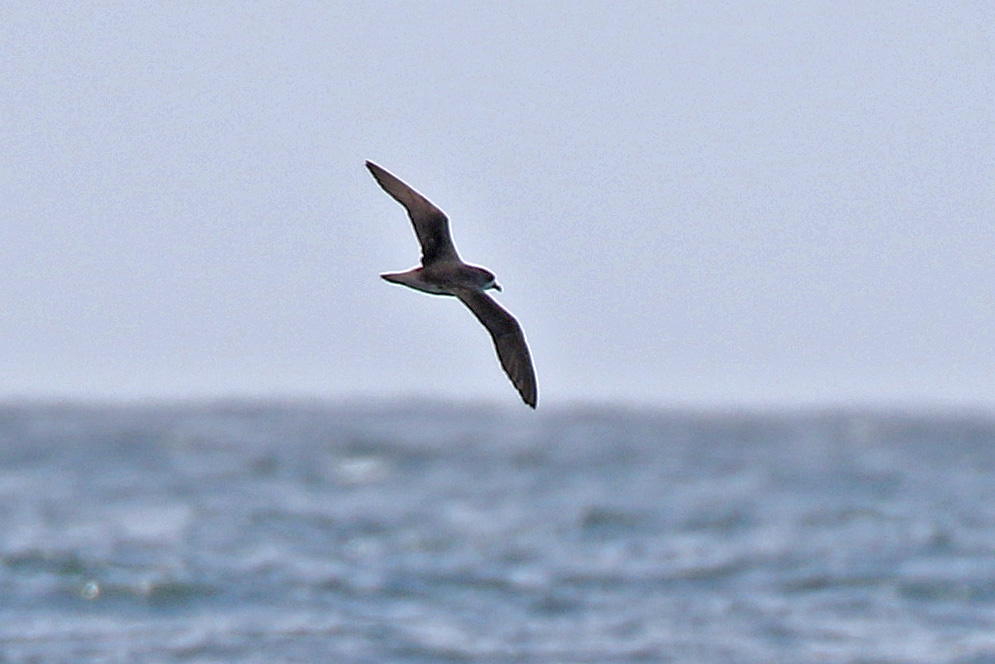
The best image of the potential Zino's Petrel. Although banking away from the camera, the bill nonetheless looks slender and thus relatively long, unlike most Fea's-types, which are obviously heavy billed (Paul Connaughton).
At this stage some of the people on board had got onto the bird as it flew away to the north-west. I quickly got loads more oil into the water but the bird had gone upwind of us and away. I felt physically ill. I sat down shaking and swearing. I knew something important had just slipped away. Was this a Zino's Petrel? If it was 'just' a Fea's it was bloody tiny … either way, it needed to be photographed and documented.
I started to look at the photos on the back of the camera. It was pretty disappointing. They were mostly blurred dots. However, one decent picture came up – maybe all was not lost. To me the bill looked small. Small enough, though? I couldn't tell. I managed to get a few other poor shots that showed a dark underwing. Nothing was going to easy about this bird – I'd just have to wait until I got home and could take a better look at the photos. In the meantime, I posted a back-of-camera shot on social media to see what others might think.
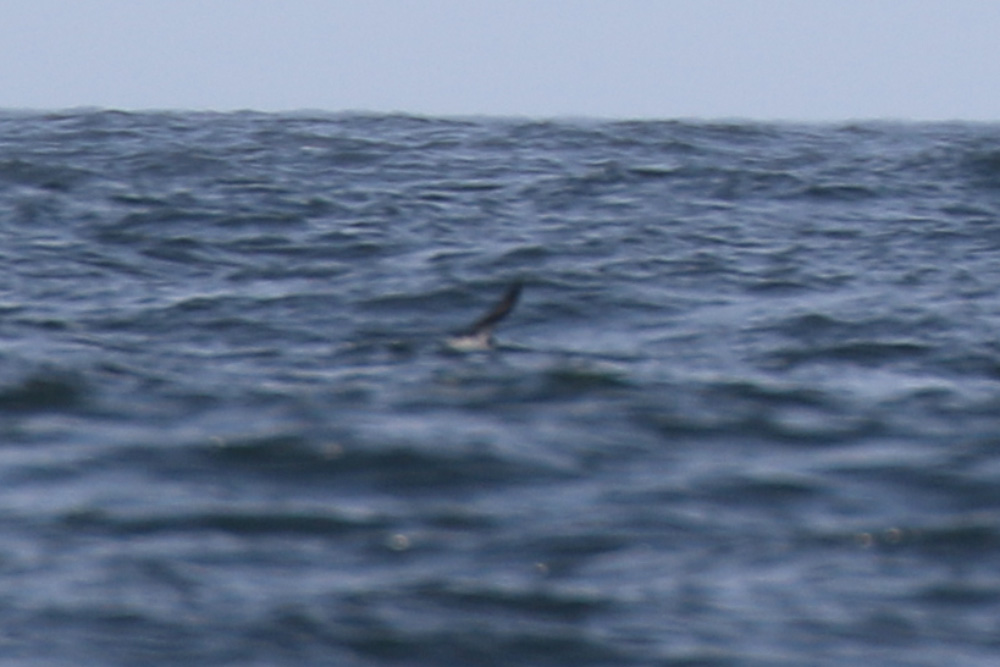
Although little more than a documentation shot, this image nonetheless shows a largely dark underwing on the bird. Many Zino's have variably pale underwing coverts, though birds with darker underwings like this do occur, too (Paul Connaughton).
It wasn't long before my mind was taken off the bird as the first Wilson's Storm Petrel went by. It kept going. Then, another came in, and we all got excellent views. Not long after, a pair of adult Sabine's Gulls came in and flew up and down the slick before settling down not too far away from us – crackers, they were.
The numbers of birds was always very low, with never more than 20 birds at a time in the slick. We clocked up a decent tally in the end with one Zino's/Fea's, three Sooty Shearwaters, two Great Shearwaters, one Bonxie, two Sabine’s and two Wilson's among the Manx and Stormies. A probable Blue Shark circled in the distance, too, but disappeared before I could get anyone on to it. What a mind-blowing day!
Feelings from others on the petrel are that it is a very interesting bird. No doubt it is. Closer inspection of photos and detailed descriptions will have to come. I have been lucky enough to have seen Fea's Petrels over the last five years in Irish waters and have photographed the most northerly sight record of Zino's, in the North Atlantic west of Ireland and outside its Exclusive Economic Zone. I have a good feel for these birds.
It's easy to imagine how I felt ill after the sighting, as anyone encountering a Pterodroma knows; they do weird things to us seabirders. It may well be a Zino's. It's a hard call. Hopefully we will get to the bottom of it. There are no confirmed records of Zino's Petrel for the UK or Ireland. With a world population of maybe 80 or fewer pairs on the island of Maderia, this is a truly rare bird. We'll see what happens. One thing is for sure, I'll be out on the water again at the weekend! Watch this space …
- Find out more about Shearwater Wildlife Tours at shearwaterwildlifetours.com.
Further thoughts on ID
Josh Jones comments: "Though my experience with Zino's Petrel amounts to just a few pelagic trips off Madeira, these limited encounters suggested to me that at least some individuals are quite quickly recognisable on jizz – although it of course helped having had fresh experience with Desertas Petrels on the same trips for direct comparison.
"Of the six or so Zino's I saw at sea in 2018, some were more obvious than others – presumably due to variation in size, with smaller birds more distinctive. The first Zino's I saw came shortly after a Desertas Petrel and the bird was quite obviously smaller. It looked only a fraction larger than the nearby Bulwer's Petrels and, combined with an even more rapid, scything flight pattern and with hasty changes in direction, really stood out. Photos then confirmed the strong suspicion that it was a Zino's. Some however, were less obvious, but generally a hunch could be obtained on flight pattern and overall appearance as to whether it was going to be Zino's (and photos later backed all of these inklings up). Paul is an experienced seabirder and, although with no Fea's-types for comparison on the day (which is obviously a big help!), has encountered plenty in the past – reading his impressions of the bird at sea reminded me of my own observations and I'd be inclined to suggest that these weigh in favour of this bird being a Zino's.
"Frustratingly, I think we are ultimately a few pixels light to conclude the identification one way or another, but one image, showing the bird banking from above, seems to give a promising impression of Zino's. The bill looks shallow, lightweight and, consequently, relatively long, and not obviously deep and stubby like many Desertas. Of course, the dark underwing is not as striking as in many Zino's, which have varying extents of pale in the underwing coverts, but plenty of Zino's show darker undersides and this isn't a problem. As always, the usual caveats apply for drawing conclusions from a single image."
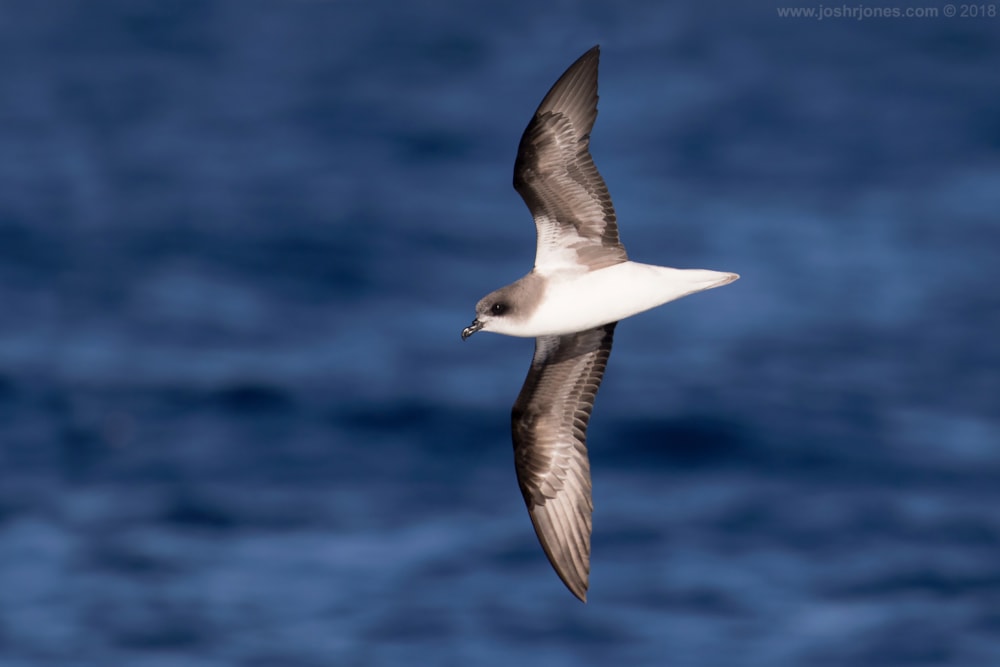
Zino's Petrel, at sea off Madeira, 22 June 2018. This bird has a largely dark underwing, with the mid-grey underwing coverts appearing paler due to the low, bright sunshine (Josh Jones).
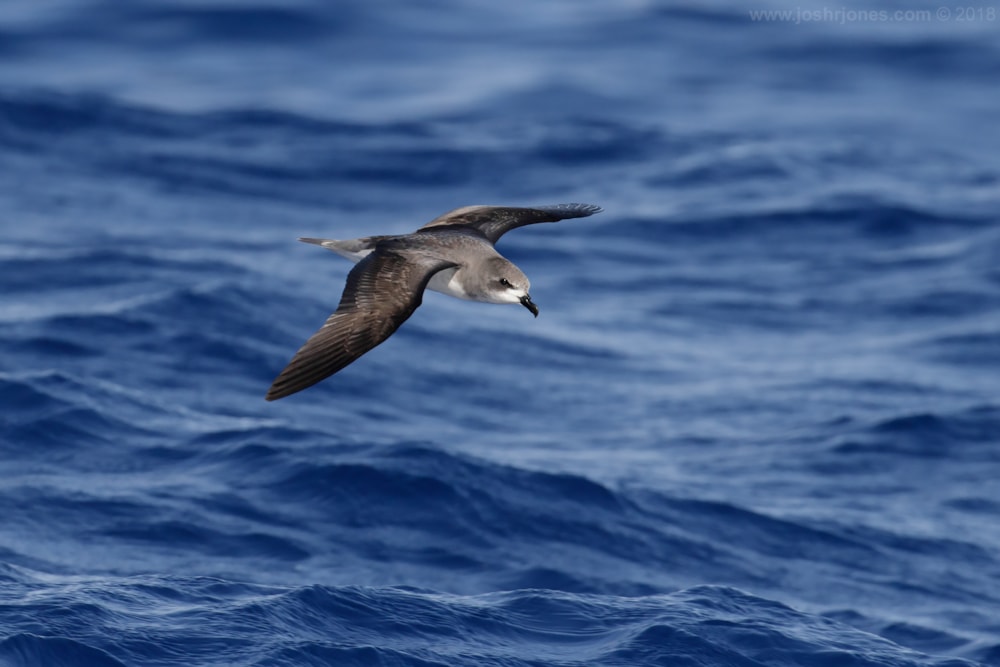
Zino's Petrel, at sea off Madeira, 20 June 2019. Another angle demonstrating bill and head structure (Josh Jones).
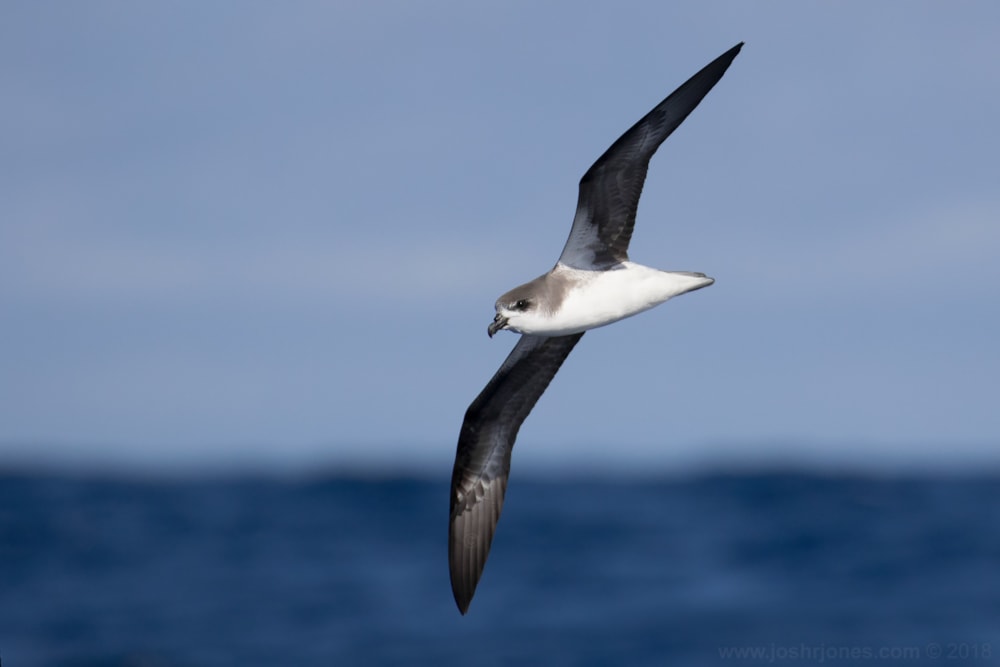
Desertas Petrel, at sea off Madeira, 20 June 2019. When compared to the above Zino's, the deeper and heavier look to the bill is quite distinctive. Not all are this bulky-billed (Josh Jones).
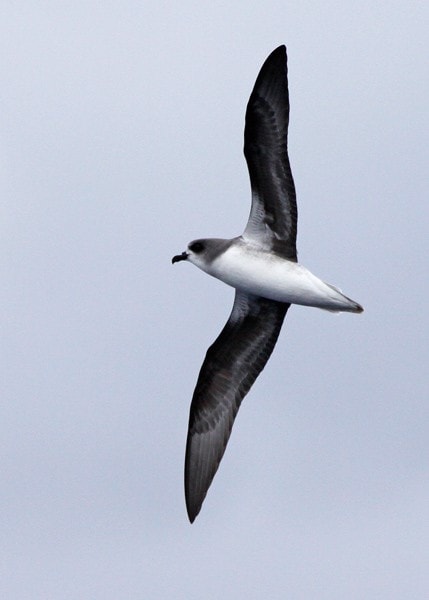
Zino's Petrel, at sea off Madeira, 18 May 2011. Accounting for differences in photo quality, the bill shape and structure does not appear dissimilar to Paul's bird off Co Cork on 20 August 2019. This bird also displays a largely dark underwing (Mike Buckland).


